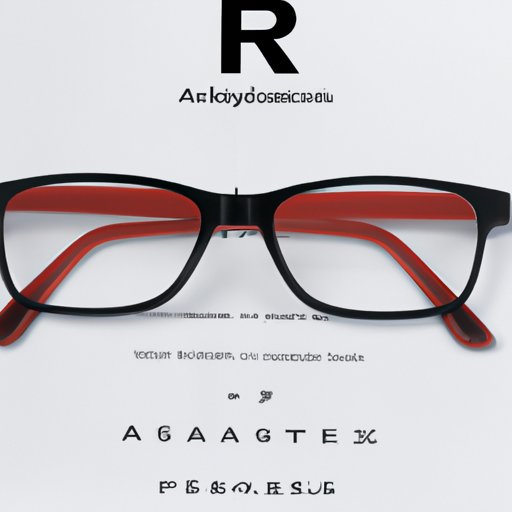I. Introduction
If you wear glasses, it is essential to understand your glasses prescription. An accurate prescription is critical to ensure that your glasses provide optimal vision correction. Reading your prescription can seem daunting, but this article will guide you through the process step-by-step.
This article is aimed at anyone who wants to learn how to read their glasses prescription. We will break it down into simple, easy-to-understand language and provide visual aids to help you understand every part of the prescription. By the end of this article, you will be familiar with how to read your prescription, common mistakes to avoid, and special considerations regarding your prescription.
II. A Step-by-Step Guide
Reading a glasses prescription can be challenging if you are not familiar with the terms used. Here is a step-by-step guide to help you understand your prescription:
Sphere
The sphere is the first number listed on your prescription. It represents the amount of lens power you need to correct for either nearsightedness (minus sign) or farsightedness (plus sign). The larger the number, the more severe your nearsightedness or farsightedness is.
Cylinder
The cylinder is the second number listed on your prescription. It represents the lens power needed to correct for astigmatism, which causes blurred vision due to an irregularly shaped cornea. Not all prescriptions have a cylinder value.
Axis
The axis is the third number listed on your prescription and applies only to people who have astigmatism. It represents the angle of the lens that corrects for the astigmatism.
Addition
Addition values apply only to people who need bifocal or progressive lenses and help correct presbyopia. Presbyopia is an age-related condition that reduces the ability of the eyes to focus on near objects. Your doctor will determine the appropriate addition value to add to the lens’s bottom portion.
III. Visual Aids
To help you understand your prescription better, we have included visual aids to assist in interpreting each part. It is essential to know that the prescription parameters apply to different types of lenses, including single vision, bifocals, and progressive lenses. Each lens style has specific design elements altered to adapt the prescription parameters.
IV. Common Mistakes
Reading your prescription incorrectly can lead to unusable or uncomfortable glasses. The most common mistake is not reading the sph and cyl correctly, resulting in an incorrect lens power or axis. Another common error people make is not updating their prescription regularly, leading to worsening vision correction and ultimately straining your eyes.
Tips to avoid common mistakes include checking your glasses prescription for any errors with customer service or your optometrist. Updating your prescription regularly or upon notice of degraded vision may avoid complications or further vision degradation.
V. Special Considerations
Some conditions may require special consideration when reading your prescription. For example, astigmatism may require more accurate measurements to ensure the correct lens is made. Presbyopia may require a more delicate balance between the distance and near-focusing power of the lenses. Your optometrist will be able to advise further on these conditions and your prescription requirements.
VI. FAQs
Here are some common questions people have about reading glasses prescriptions:
1. What do OD and OS mean?
OD stands for oculus dexter, meaning “right eye,” and OS stands for oculus sinister, meaning “left eye.”
2. Why are there two numbers per eye?
Your eyes may have different lens power needs, so your prescription may differ for each eye. The different ocular health conditions, such as cataracts or astigmatism, may contribute to different power lens requirements for each eye.
3. Why is there a prism value on my prescription?
A prism value may be required if you have a misaligned eye. The prism value helps align your eyes, resulting in less discomfort and improved vision.
VII. Next Steps
Once you understand your glasses prescription, the next step is choosing the right glasses frames. Note that some eyeglass lenses that meet the exact prescription parameters may not be suitable for frames. The frame choice is critical as it significantly affects comfort, durability, and vision performance. It is best to consult with your optometrist and qualified optical retailers before making any decisions.
VIII. Conclusion
Understanding your glasses prescription is vital in achieving optimal vision correction and eye health. By using our step-by-step guide and visual aids, you should have a clear understanding of how to read your prescription, common mistakes to avoid, and special considerations to note. If you have any further questions, discuss the prescription with your optometrist or an optical retailer. Regular checkups and lens changes are necessary to maintain accurate vision correction and eye health.
